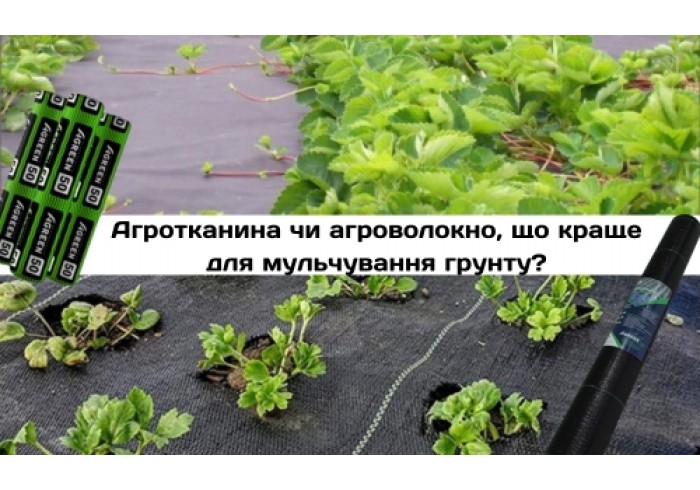Agrotextile or agrofibre, which is better for mulching the soil?
In modern agriculture, innovative materials are widely used to create the most favorable conditions for crop development and to ensure consistently high yields. Among these, agro spunbond (агроволокно) and agrotextile (агроткань) for mulching are the most popular. Although both materials perform similar functions, there is a significant difference between them.
Let’s examine the main characteristics of each material, their common features and differences, advantages and disadvantages, as well as define the optimal areas of use.
Next-generation agro materials: common features
Both materials do not let sunlight through, which is necessary for photosynthesis, thus suppressing weed growth and leading to weed die-off. However, agrotextile is more effective against weeds as it completely eliminates the need for herbicides. Weeds can eventually grow through agro spunbond over time.
Agro spunbond and agrotextile:
- provide air circulation, which positively affects the development of the root system;
- allow water to pass through easily thanks to their porous structure—no need to remove the covering during watering;
- slow down evaporation, preventing the soil from drying out and reducing the frequency of watering;
- eliminate the formation of rot and mold under the cover;
- promote quick soil warming due to their dark color, protecting plant root systems from freezing;
- create an optimal microclimate for the root system;
- protect fruits from dirt, preserving their marketable appearance;
- help obtain an earlier harvest, significantly increasing crop yields;
- contain UV stabilizers, ensuring resistance to ultraviolet radiation and considerably extending their service life.
Key differences for the right choice
Agro spunbond is a non-woven material produced from polypropylene fibers through thermal bonding. Its structure resembles a thin sheet of fabric. Under heavy loads, it may tear.
Agrotextile is a woven material made by interlacing polypropylene strips to form a mesh. The texture of the material is similar to polypropylene sugar sacks. This technique gives agrotextile higher strength and density, as well as enhanced resistance to significant mechanical damage. You can walk freely on agrotextile without worrying that it will tear.
Due to its greater strength and wear resistance, agrotextile stands out for its durability—capable of lasting up to 7 seasons. Consequently, its cost is quite high, although the investment pays off quickly.
Agro spunbond is significantly cheaper than agrotextile, but its service life is much shorter (2–3 seasons).
Agrotextile and black agro spunbond: purposes and application features
As a long-term mulch for perennial plantings, it is better to buy agrotextile because of its higher strength, tear resistance, and longer service life. It is also an excellent choice for laying on garden paths and flowerbeds.
For seasonal protection of annual plants, black agro spunbond is the ideal option. It is easier to lay, costs less, and provides more comfortable conditions for the growth of agricultural crops.
When mulching strawberries, you should consider the scale of cultivation. For small household plots, you can buy black agro spunbond. Farmers with large plantations should opt for agrotextile. It will retain its integrity even with frequent foot traffic. To achieve maximum effectiveness, it is recommended to combine materials: use agro spunbond for mulching the rows and lay agrotextile in the row spacing.
Under decorative shrubs, where people rarely walk, you can lay black agro spunbond, which will help save money. It is advisable to cover the fabric with sawdust or bark on top.
The soil under fruit trees and berry bushes should be covered with agrotextile, allowing you to forget about weeds for several years.
When choosing a mulching material, also pay attention to the regional climate conditions. If strong winds often blow in your area, the optimal choice is Agreen agrotextile. If there are frequent temperature swings, it is better to choose black agro spunbond.
Agrotextile or agro spunbond: what to choose for your plot
| Conditions | Agrotextile | Agro Spunbond |
| Vegetable and melon crops | + | |
| Berry plantations, orchard | + | |
| Decorative plants | + | |
| Seasonal plantings | + | |
| Long-term projects | + | |
| Garden paths, flowerbeds | + | |
| Sharp temperature fluctuations | + | |
| Strong winds | + | |
It is impossible to give a definitive answer about which is better for soil mulching: agro spunbond or agrotextile. The choice depends on specific needs and conditions of use.



